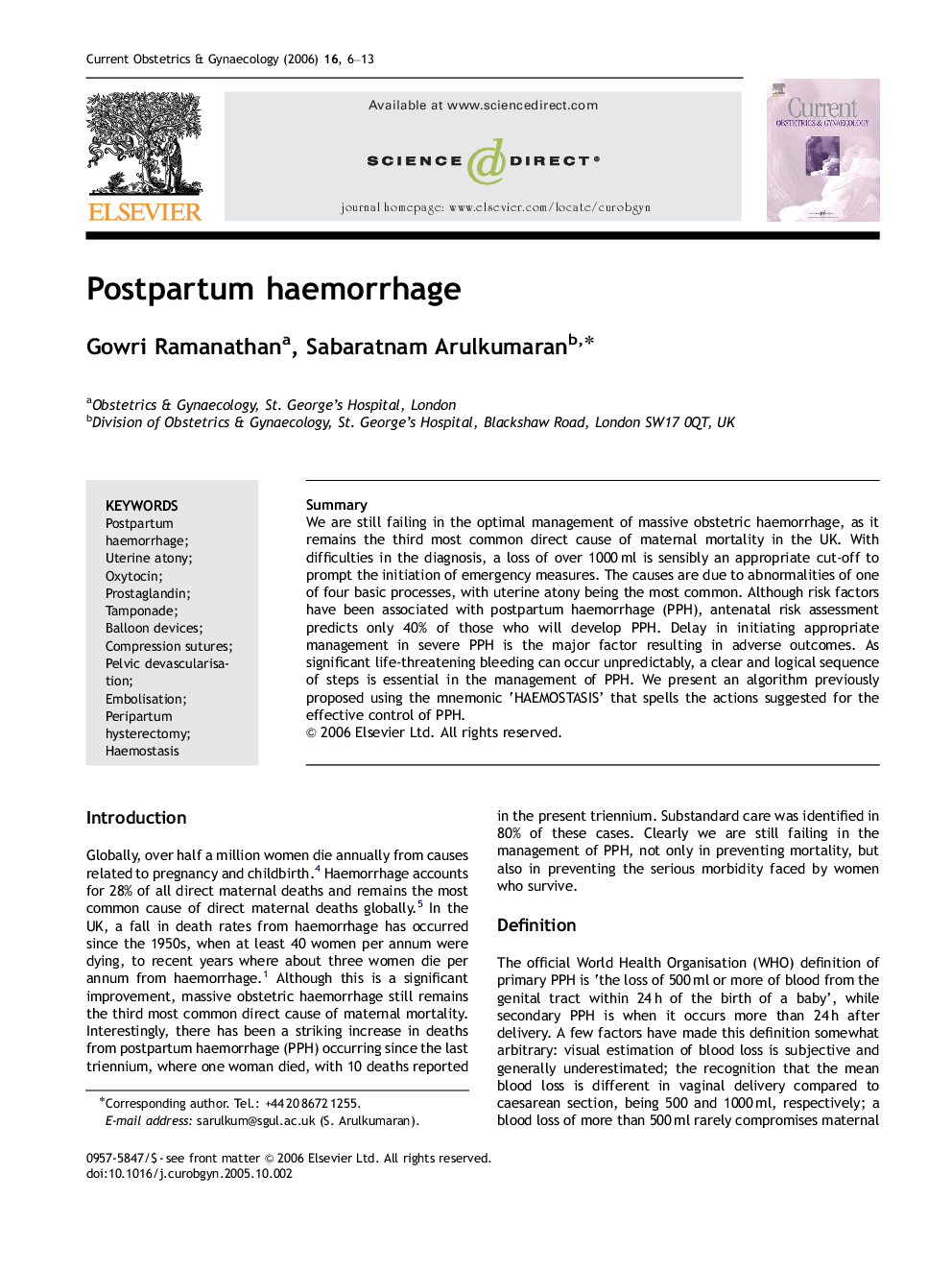| Article ID | Journal | Published Year | Pages | File Type |
|---|---|---|---|---|
| 3916335 | Current Obstetrics & Gynaecology | 2006 | 8 Pages |
SummaryWe are still failing in the optimal management of massive obstetric haemorrhage, as it remains the third most common direct cause of maternal mortality in the UK. With difficulties in the diagnosis, a loss of over 1000 ml is sensibly an appropriate cut-off to prompt the initiation of emergency measures. The causes are due to abnormalities of one of four basic processes, with uterine atony being the most common. Although risk factors have been associated with postpartum haemorrhage (PPH), antenatal risk assessment predicts only 40% of those who will develop PPH. Delay in initiating appropriate management in severe PPH is the major factor resulting in adverse outcomes. As significant life-threatening bleeding can occur unpredictably, a clear and logical sequence of steps is essential in the management of PPH. We present an algorithm previously proposed using the mnemonic ‘HAEMOSTASIS’ that spells the actions suggested for the effective control of PPH.
